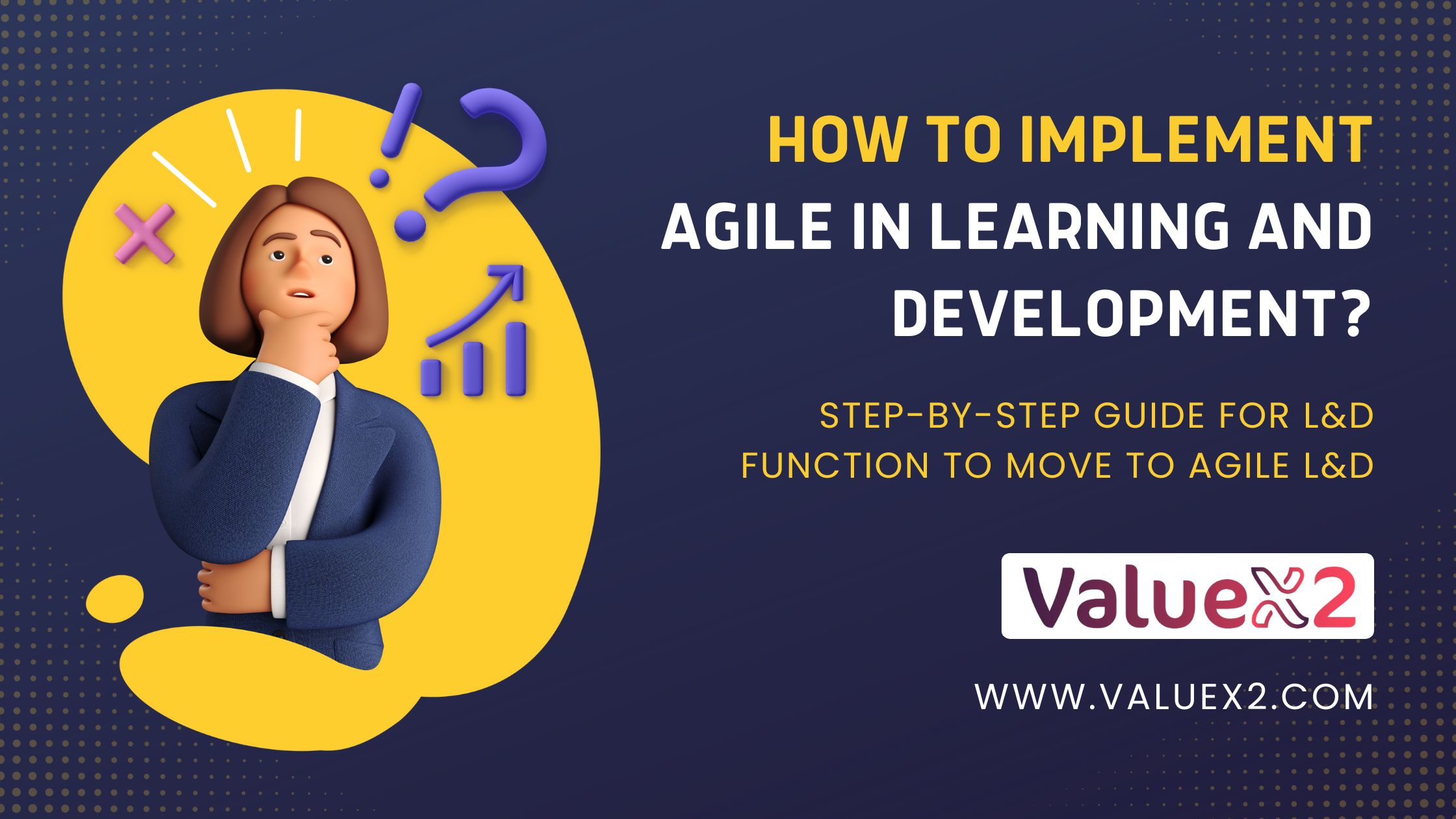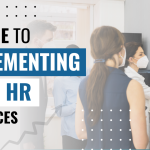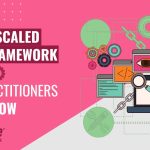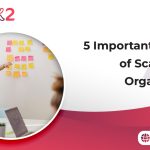Read this detailed guide to learn how to implement Agile in learning and development.

What is Agile?
What is Agile? – Agile can be defined as a mindset that allows you to be responsive and adaptive to changing needs. It is a philosophy built around incremental learning to improve team performance.
How can Agile Strategy help the Learning and Development (L&D) Function?
Agile as a buzzword has been around for a while and can be seen to be solving problems that businesses are facing. Often L&D professionals think that Agile is for the IT teams and are confused about how to implement Agile methodologies within L&D processes. You’re not alone! Frameworks like Scrum and Kanban have become synonymous with software development due to their iterative, adaptable nature. However, Agile in learning and development holds immense potential.
This is especially important now due to the demands and pressures the L&D teams are facing like budget and resource constraints coupled with the need to build a skill-based organization at speed to support their dynamic businesses.
While L&D projects might traditionally involve longer development cycles, Agile principles can be adapted to break down learning initiatives into manageable smaller chunks (learning modules, micro-learning content). This allows for faster delivery of training materials, continuous improvement through feedback loops, and a more responsive approach to evolving agile learning needs.
So that is all good but then How can Agile be used in Learning and Development? What is Agile L&D? Can L&D take advantage of Agile Principles?
In this blog, I will try my best to answer the above questions. We HR professionals love checklists so as a bonus I will also include some steps to get started practicing Agile in L&D.
Before we delve into the questions like:
- What is the agile strategy for L&D?
- What is agile learning development?
- What is the agile learning and development plan?
- Or, What is the agile method of training development?
Getting the basic premise right is vital, i.e., How to instil an Agile Mindset and Culture in your L&D Team?
Because, let us be honest, if you don’t have the right mindset, then no tool or Scrum Framework can help you.
In our experience instilling an Agile Mindset requires:
- Prioritization with Business Alignment: L&D teams are often resource-constrained and it is not possible to do everything that is demanded from the team, so being able to think about what to do now will help the team achieve their long-term goals.
- Clarity on the “WHY”: This requires us to ask “Why” we are doing it so that it can tie back to achieving the goals and not be overburdened with low or no employee benefits.
- No Big Bang Approach: We should refrain from the all-or-nothing approach. As L&D professionals, we like to roll out programs to as many employees as possible instead we should work in iterations, learn iteratively, and use the feedback and data to adapt and scale the learning programs.
- Culture of celebrating failures: As you can see, Agile requires experimenting so having psychological safety for your team to learn from failures is undoubtedly the most important. This allows the team to hypothesize, test, investigate, and deliver more meaningful experiences.
- Outcome vs Output Approach: This helps build a continual improvement culture in your team, not doing things because it has been done that way in the past but doing it to add value.
- Learn Continuously and Adapt: To support the above holding regular retrospectives i.e. meetings where we reflect as a team what we did, what we can do better, and what worked is important to improve the process.
The above will help build a new L&D agile strategy that allows the L&D team to deliver training that is more focused on the learner’s point of need.
What inspiration can we take from Design Thinking for Agile L&D strategy?
We often get asked, How to develop Learning Programs that are solving the business issue as opposed to responding to an urgent request from business stakeholders.
Any agile learning program should be supported by a proper need that has a real impact on the learner. This requires L&D professionals to step up and do their own “User Research” when approached by Business Stakeholders with a training need.
This discovery process allows L&D professionals to get to the heart of the challenge faced by the team/company from a leaner perspective.
Take for example, As an HR L&D professional, you will be most often approached by Senior Management or stakeholders, or client stating their business issue, “Sales going down” or “Customer Service scores dropping”, and then they ask you to prepare an upskilling course for the same. In this scenario, your stakeholder already has assumed the solution for the issue they are facing, which to be honest may not even be the actual root cause. For instance, with some more research it was found that as opposed to having a customer service upskilling training, the contact staff was unable to perform as the recent system update had slowed the uploading time of the CRM, causing them to rush through calls to avoid queue built up!
To sum up, having a clear understanding of Learner needs and wants and how it solves the organizational issue raised helps L&D plan and design the right training product. This in the Agile world would mean leveraging design thinking principles to build customer-centric solutions.
Step-by-step guide for L&D Function to move to Agile L&D
A combination of certain ceremonies, exercises and tools can help L&D function to start experimenting with Agile methodologies.
This guide introduces Agile methodologies like Scrum and Kanban to your L&D function, helping you deliver learning experiences faster and more effectively. Remember, Agile is about iterative improvement, not an all-or-nothing approach.
- Define Your Why:
- Start with the purpose – What business problem are you trying to solve with learning? Increased sales? Improved customer service? Clearly define the desired outcome.
- Choose Your Pilot Project:
- Select a small, well-defined learning project – This allows you to experiment, learn, and refine your Agile L&D process before scaling up.
- Build Your Agile Team:
- Assemble a cross-functional team – Include subject matter experts (SMEs), instructional designers, and representatives from the target learner group.
- Backlog & Prioritization:
- Create a list of all learning activities needed to achieve your “Why.” – Prioritize these activities based on their impact on achieving your goals. This is where it helps L&D professionals focus their energy on what is most useful to the business and employees.
- Kanban Board for Flow:
- Visualize your workflow with a Kanban board – List activities in stages like “To Do,” “In Progress,” and “Done.” This helps maintain focus and identify bottlenecks.
- Work in Sprints with PDCA following Agile Development for Learning:
- Break down the project into short, time-boxed cycles called sprints – Within each sprint, use the PDCA (Plan-Do-Check-Act) cycle to deliver a chunk of learning. This is the place where the L&D team started testing their hypothesis and assumptions. Something of value is delivered at the end of every timebox that allows us to gather relevant data and make data-driven decisions as opposed to being driven by HIPPOS (Highest Paid Person Opinion).
- Agile Ceremonies:
- Hold regular meetings to keep your project moving – Daily Stand-ups for quick team updates, Sprint Planning to define the next sprint’s goals, Sprint Reviews to showcase progress and gather feedback, and Sprint Retrospectives to identify areas for improvement.
- Gather Feedback & Adapt:
- Collect feedback from learners and the team throughout the process – Analyze the data to identify successes and areas for improvement. Be prepared to adapt your approach based on what you learn.
- Scale Up & Share:
- Once you’ve refined your Agile L&D process on your pilot project, consider scaling it up to other learning initiatives – Share your learnings and best practices with the wider L&D team.
This step-by-step guide provides a foundation for getting started with Agile L&D. Remember, Agile is all about flexibility and continuous improvement. Be prepared to adjust your approach as you learn and experiment!
Now that you have got excited, and been given a lot of food for thought, I want to hear from you on “What are you going to do differently?”.
As an HR professional, it is vital to continuously upgrade your skills and future-proof your career. Learning about Agile HR and how strategic HR management can leverage agile principles and values in the ICAgile certification course Agility in HR (ICP-AHR). These classes provide real-world takeaways, frameworks, and methods that prepare teams to apply agility to HR strategies and build their collective intelligence.
Do connect with me (Linkedin) if you want to explore this further and bounce ideas to make your L&D Agile!

Sagar is an HR Agile Coach & Business Agility Consultant with over a decade of experience in HR functions at small and large multinational corporations. He has been running an HR consulting firm for the last few years, focusing on leveraging agile methods to increase business efficiency.
Sagar is an authorized instructor for ICAgile Agility in HR (ICP-AHR) and Business Agility Foundations (ICP – BAF) training courses. He has considerable experience in coaching and training on applying agile practices for his clients, primarily HR departments. He also provides consulting for HR for Agile and Agile for HR transformation to corporates.






